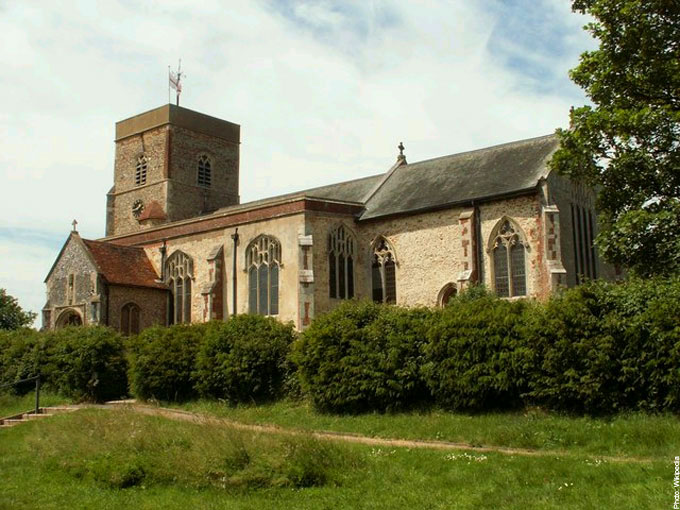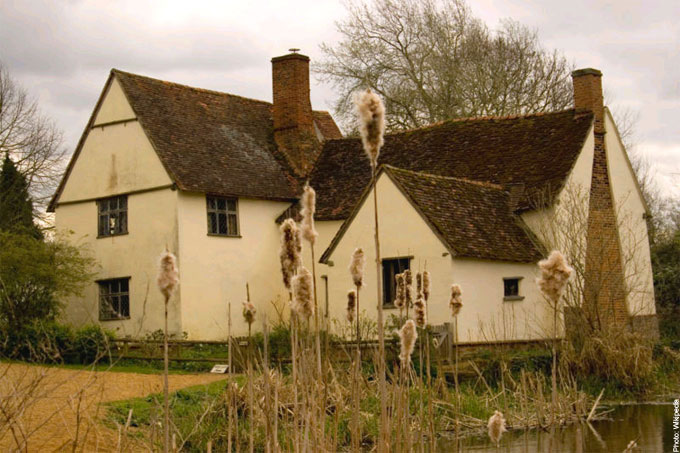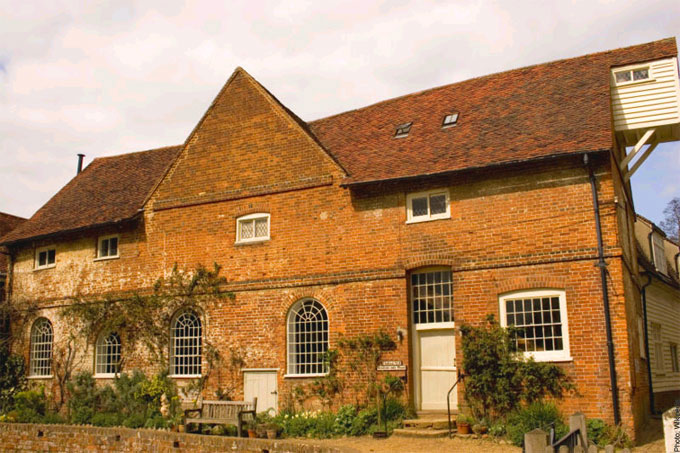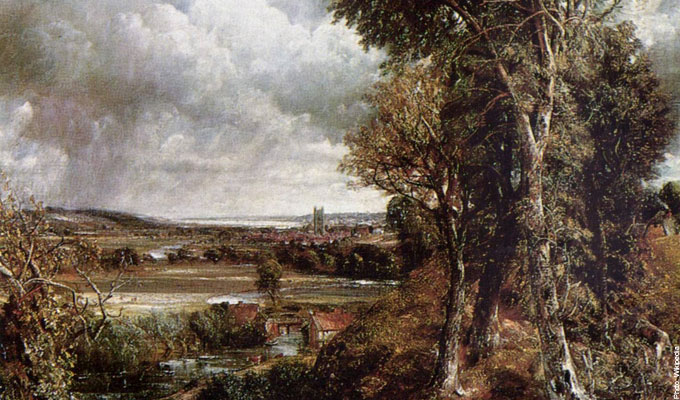Meander through a masterpiece, wander along winding riverside footpaths, discover landmarks and appreciate an unchanged landscape. Take a look at some of Suffolk’s must see spots.
There are few places in the world where you can literally walk through a masterpiece, wander along its winding riverside footpaths, discover its landmarks and enjoy its unchanged landscape. Here are some of Suffolk’s must-see spots.
The Dedham Vale and Stour Valley

The Dedham Vale and Stour Valley includes the Dedham Vale Area of Outstanding Natural Beauty. This beautiful swath of English countryside, made famous my John Constable, is dotted with charming villages and fascinating local attractions.
Visit: www.dedhamvalestourvalley.org
St. Mary’s Parish Church
 St Mary’s Parish Church is a familiar landmark in Constable’s paintings and The Ascension is on permanent display there.
St Mary’s Parish Church is a familiar landmark in Constable’s paintings and The Ascension is on permanent display there.
Visit: www.dedham-parishchurch.org.uk
Dedham Arts and Crafts Centre
Dedham Arts and Crafts Centre is housed in a converted church and showcases the work of more than 30 artisans and the inspired buying skills of specialist retailers.
Visit: www.dedhamartandcraftcentre.co.uk
Castle House
Castle House, once home to Alfred Munnings, is a fitting memorial to the artist and now houses the largest single collection of his works.
Visit: www.siralfredmunnings.co.uk
The Bell Cage
The Bell Cage at St Mary in East Bergholt was erected as a temporary measure in 1531 but the bells have been in regular use ever since.
Visit: www.eastbergholt-bells.org.uk
Willy Lott’s Cottage

Willy Lott’s Cottage that features in Constable’s painting, The Hay Wain, can be seen on a wonderful riverside walk.
Visit: www.dedhamparishcouncil.org.uk
Flatford Mill
 You can also visit Flatford Mill and Bridge Cottage on a National Trust guided walk.
You can also visit Flatford Mill and Bridge Cottage on a National Trust guided walk.
Visit: www.nationaltrust.org.uk
DON’T MISS…
While the heart of Constable Country is comprised of a few square miles, all easily accessible by car or a day spent walking, a trip to the Sixteenth Century Christchurch Mansion in Ipswich gives the chance to enjoy the largest collection of painting by John Constable and Thomas Gainsborough outside of London.
Visit: www.visit-ipswich.com
Explore Constable Country on the River Stour by hiring a boat in either Flatford or Dedham and following its winding course through the peaceful water meadows.
Visit: www.flatfordboats.com or www.dedhamboathouse.co.uk/boathire
An excavation carried out by the National Trust and River Stour Trust at the dry dock in Flatford revealed the remains of a barge similar to that shown under construction in Constable’s ‘Boat-building Near Flatford Mill’ (1814-15).
Visit: www.nationaltrust.org
Every May the village of East Bergholt hosts a madcap charity pram race where teams of three in fancy dress chase around a two and-a-half mile course stopping at every pub for a pint.
For more information contact Visit Essex, tel +44(0)1245 437087
Work by the River Stour Trust, working in partnership with the Managing a Masterpiece team, is ongoing to restore a Stour lighter vessel that once plied its trade on the river 120 years ago. The rebuilt vessel, the John Constable, is due to operate as a passenger-carrying vessel from 2013.
Visit: www.riverstourtrust.org
The Stour Valley Path, which passes through the Constable County villages of Dedham and Flatford, is a 60-mile route following the valley sides of the River Stour through Suffolk, Essex and Cambridgeshire.
Visit: www.stourvalleyway.co.uk
DID YOU KNOW?
• As a painter for patrons, Constable was constantly troubled by deadlines and sometimes reworked a picture even after it had been sold.
• While the house in East Bergholt that was the birthplace of Constable is no longer standing, the site’s original iron railings are Grade-II listed.
• Alongside his landscapes, Constable also painted over 100 portraits, many of local gentry, as a means of earning an income.
• Writing in a letter about ‘The Hay Wain’ in 1822, Constable wrote, ‘I have some nibbles at my large picture of The Haywain in the British Gallery. I have an offer of £70 without the frame to form part of an exhibition in Paris’. The painting was eventually awarded a gold medal at The Salon in Paris.
• The term Constable Country was coined during the painter’s own lifetime and it’s said that he even heard a passenger using the phrase during a coach journey in the area.
• According to the painter Walter Sickert, the Stour Valley has been left ‘a sucked orange’ by Constable and Thomas Gainsborough.
• Although today Constable is one of the world’s most celebrated painters, he was never financially successful or widely recognised during his lifetime in his native country and only elected a full Royal Academician when he was 53.






 © 2024
© 2024